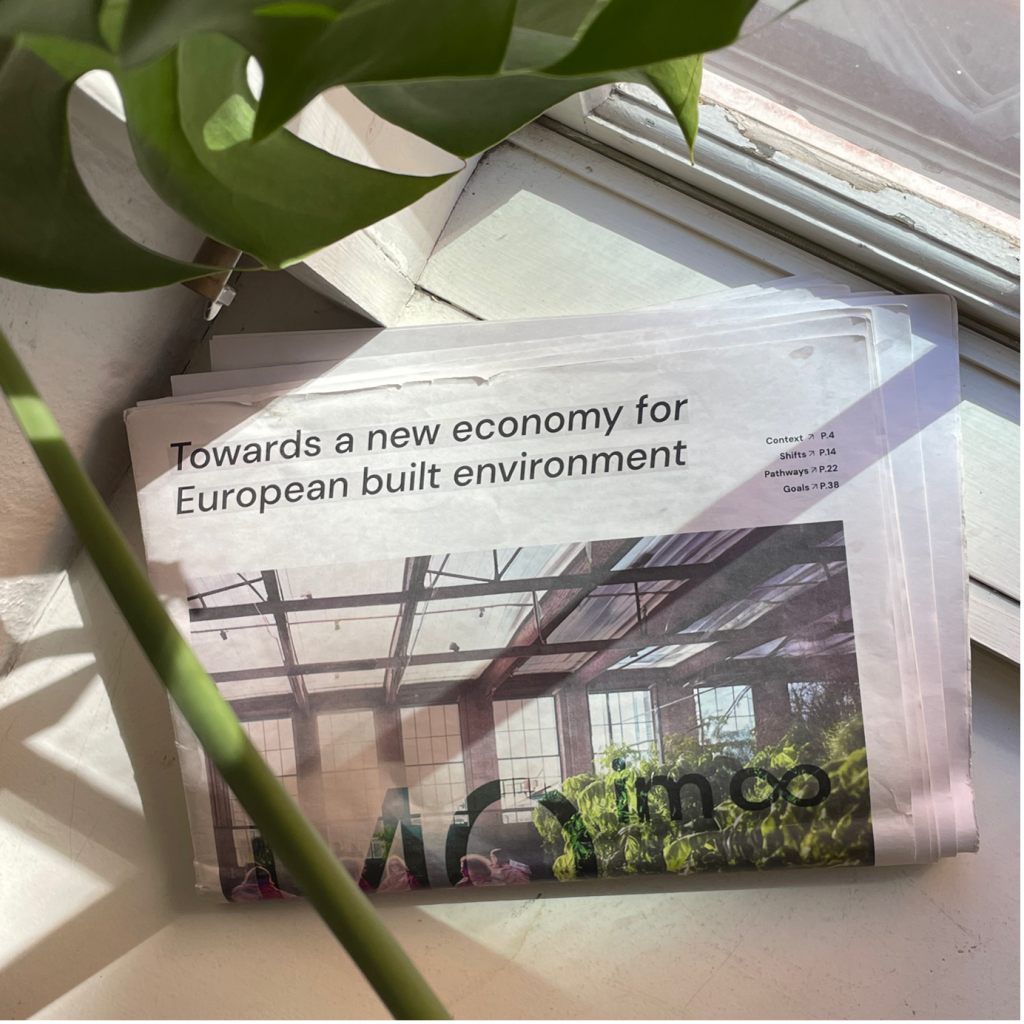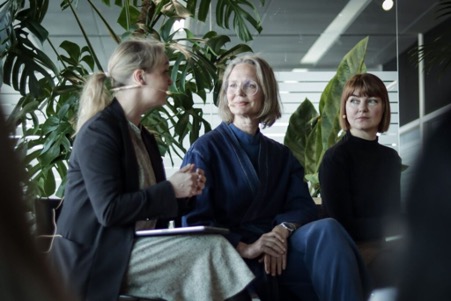
New European Bauhaus is an initiative that aims to connect the EU Green Deal with our daily lives and ways of living. One of the outcomes from the New European Bauhaus Festival in Brussels this April was a White Paper made by the multidisciplinary design institute, Dark Matter Labs, about A New European Bauhaus economy. The paper highlights key challenges embedded in the built environment, including climate footprint and impact on the well-being of both humans and the environment. Seven pathways are proposed for transforming the industry economically and on a systemic level.
“…this mindset still separates humans from nature, and ignores our interconnectedness. To address real-world challenges, we must reimagine ourselves as part of nature and recreate our symbiotic relationship with the world…”
According to the paper, we are still operating from a western, human-centered worldview, which has shaped our mindset for centuries; that of promoting the separation and objectification of nature. Despite some changes in thinking, this mindset still separates humans from nature, and ignores our interconnectedness. To address real-world challenges, we must reimagine ourselves as part of nature and recreate our symbiotic relationship with the world. This requires a fundamental shift in understanding— Drawing inspiration from The New European Bauhaus Economy White Paper by Dark Matter Labs, we contemplate the role of art in catalysing this shift.
The transformative power of art in placemaking
Last week we were invited to discuss the topic of how architecture and art can drive solutions in the city, withAarhus City Architect, Anne Mette Boye, partner in the landscape design office Schønherr, Rikke Juul Gramand MadeleineKate McGowan representing NXT and the project The Garden Caretaker. Based on the conversation, it was clear that art and architecure can be close allies in forming a better understanding of local ecologies. Not only on a scientific level, but in terms of opening mind and body to the aesthetics of a place. In this process, art and architecture can be crucial actors in helping to restore our relation to nature.
Art possesses the unique ability to reshape our perceptions and foster a deeper connection with the world around us. Performance art, in particular, invites us to engage intimately with our environment, encouraging curiosity and empathy. It teaches us the art of listening—not from a human-centric perspective, but from the perspective of the entire ecosystem, embracing diverse viewpoints and understanding our role within it.
What if we had a character to act as a portal for reconnecting with nature?
While art can serve as a portal to reconnect with nature and listen to the ecosystem, the Garden Caretaker is an embodyment of this role. It is a proposal for how to create this portal, both between humans and nature, but also between art and the industry by actually inviting the artist into residency on construction sites, from where the Garden Caretaker invites stakeholders to follow and engage with its research and experiments.
During the Garden Caretaker pilot project in Herlev, several participants have directly expressed how an experience with the Garden Caretaker has changed their view of the world or themselves, or that they have felt something they have never felt before. Several have experienced gaining new insights that are of great significance to them either personally or professionally.
The goal of the Garden Caretaker is to inspire wiser decision-making and behaviour amongst both the inhabitants and designers of a place; becoming better equipped to consider and care for the existing living system at the place.
So in answer to the question how can art drive solutions in the city;
by inviting the artist into the placemaking process before, during and after a place is being transformed instead of after as a ‘decorator’, when a new building is finished. This way, the artist can serve as a catalyst for nurturing a relationship with nature and support a notion of co-living with the existing living system as a lead strategy in the building- and design process.

‘Solutions to Urban Wild Problems’ at BLOX, Copenhagen. Panel with Artistic leader, NXT, Madeleine Kate McGowan, Anne Mette Boye, City Architect in Aarhus and Rikke Juul Gram, Partner at Schønherr.
Article by Vera Mosbæk Ipsen